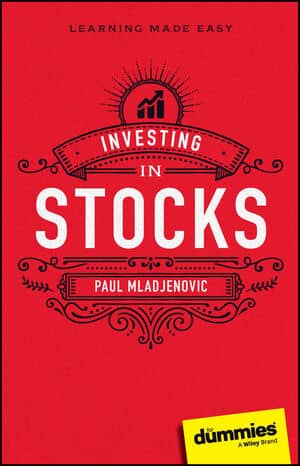You need to establish a trading profit target so that you can answer these questions: How much is enough? How do you know when to take profits? The central issue in managing the trade is that you can have control over the size of your losses (via stop-losses), but very little control over the size of the gains. You can buy a stock at $5 and make sure that you only lose $2, but you cannot force the stock to go to $9.
In practice, each individual trader develops her own technique that combines risk analysis and indicator readings. The optimum way to take profit is, in fact, one of the great, unexplored frontiers of technical trading.
Here are some choices for selecting a profit target:
Name a dollar amount. Logically, you are compensated by an amount that is a multiple of the risk you are taking. For example, you set your initial risk at $2 and are willing to accept a loss of a fraction of that, or $1.50. Your profit target is double initial risk, or $4. Because the security initially costs $8, you seek a 50-percent return. This expected gain may or may not be realistic depending on your holding period, changes in volatility, and other factors. After you have made the 50 percent, however, you obey the target and exit the trade when it reaches $12. The problem with this approach, of course, is that the price may keep on rising and then you have an opportunity loss if it reaches (say) $20.
Set a true-range amount. Say that your security, historically, has an average high-low range of $10 over 20 periods, your expected holding period. You want to capture 75 percent of the range, or $7.50. Because you use indicators to time your entry, you assume that you are entering at the low end of the range; therefore, 75 percent is realistic. When the price reaches your target, you take profit.
The problem with this approach is twofold:
The range can widen or narrow. If it widens, you aimed too low and if it narrows, your original target is too ambitious.
How do you sit through a pullback? You may have met the goal of entering at a low only to have an aberrant pullback take the price down 30 percent rather than up 75 percent. This movement was not enough to hit your stop but now your profit target is $10.50 away from the current price. Because you know the average range is $10, the probability of meeting your $7.50 target within your holding period just went out the window.
Rely on indicators. Instead of formulating take-profit rules, most technical traders rely on indicators to signal when a move has ended — the signal is the de facto take-profit rule. Relying on indicators is “winging it” and actually requires more market monitoring than the fixed dollar amount or average true-range methods, which deliver a number you can convert into a standing order with your broker.

